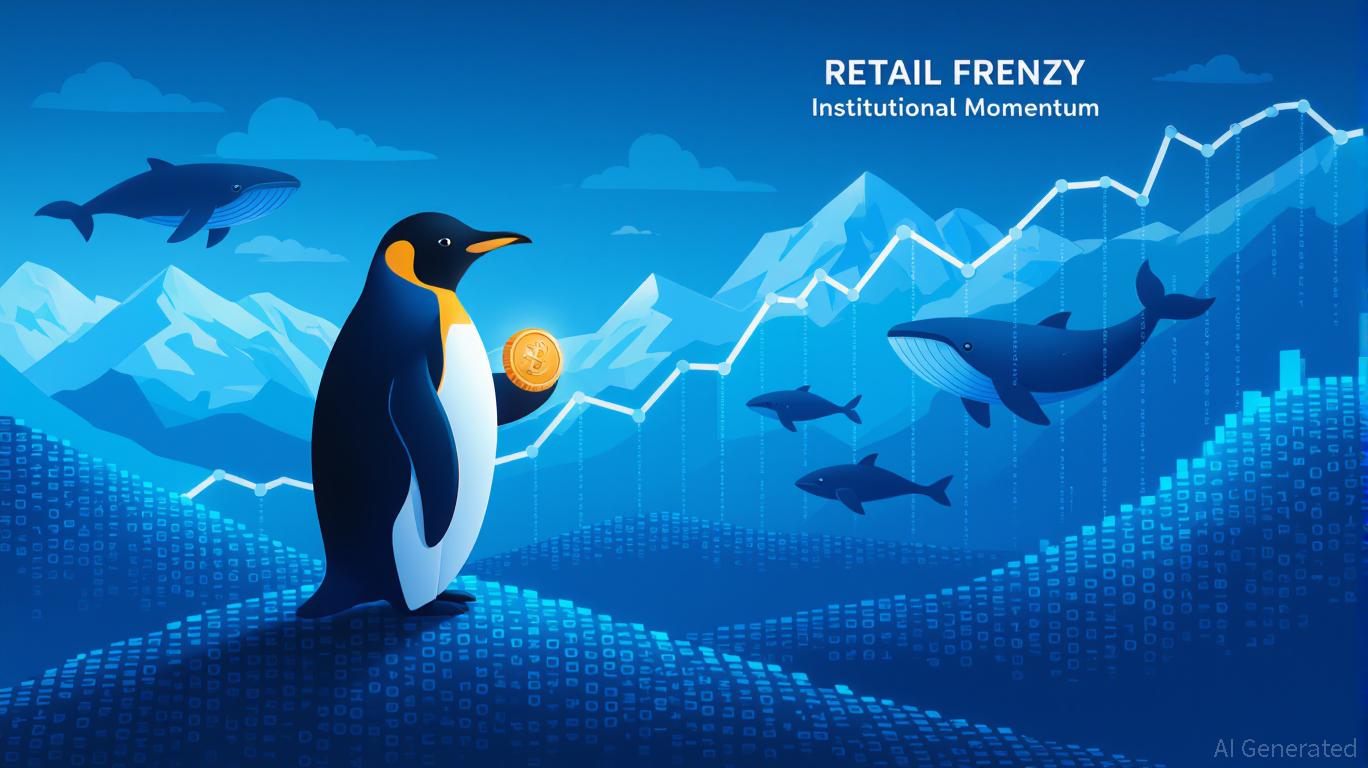Redefining Confidence: How DeFi's Openness is Transforming Crypto Lending
- DeFi platforms now dominate 66.9% of crypto lending, surpassing CeFi with $41B in Q3 2025 growth driven by yield farming and innovations like Pendle tokens. - The shift reflects demand for transparency and composability, with Aave's Plasma blockchain attracting $3B in borrows within weeks and Mutuum Finance's $20M presale highlighting DeFi's permissionless liquidity. - CeFi lenders like Tether hold 59.91% of tracked loans but face 33% smaller market size than 2022 peaks due to stricter collateral rules a
The landscape of crypto lending is experiencing a major transformation, with decentralized finance (DeFi) platforms now leading on-chain credit and overtaking centralized finance (CeFi) in terms of market dominance.
The growing prominence of DeFi highlights a wider movement in the industry toward openness and modularity. Platforms such as

DeFi’s inherent benefits—self-custody, modularity, and transparent open-source protocols—are changing how users interact with lending platforms. CeFi services focus on user convenience and regulatory adherence, while
With DeFi lending now making up 80% of all on-chain transactions, the sector’s trajectory will depend on how it manages the balance between innovation and risk.
The migration from CeFi to DeFi signals a fundamental change in how trust is established in financial systems. While centralized lenders like Tether still play a role, the decentralized approach—emphasizing transparency and user empowerment—is drawing new participants. The numbers make it clear: DeFi’s surge in on-chain credit is
Disclaimer: The content of this article solely reflects the author's opinion and does not represent the platform in any capacity. This article is not intended to serve as a reference for making investment decisions.
You may also like
The Psychological Factors Influencing Retail Investors’ Actions in Cryptocurrency Markets
- Crypto markets are shaped by behavioral finance, where retail investors drive volatility through FOMO, herd behavior, and overconfidence. - The PENGU token exemplifies this dynamic, surging 480% in July 2025 but plummeting 28.5% by October due to emotional trading cycles. - Social media amplifies emotional contagion, with traders checking prices 14.5 times daily, while financial literacy mitigates bias susceptibility. - Personality traits like neuroticism increase cognitive biases, and speculative narrat

Bitcoin News Today: Bitcoin's Unstable Holiday Periods Hide Average Gains of 6%
- Bitcoin's Thanksgiving-to-Christmas performance shows equal odds of rising or falling, with a 6% average seasonal return despite volatility. - Historical extremes include a 50% 2020 rally and 2022's 3.62% drop post-FTX collapse, amid a $2.49-to-$91,600 long-term surge since 2011. - 2025's $91,600 price reflects ongoing recovery from 2024's $95,531 peak, with institutional crypto adoption and macroeconomic factors shaping future trajectories. - Analysts advise dollar-cost averaging for retail investors, w

Australia Strikes a Balance Between Fostering Crypto Innovation and Safeguarding Investors with Updated Regulations
- Australia introduces 2025 Digital Assets Framework Bill to regulate crypto platforms under ASIC, creating "digital asset platform" and "tokenized custody platform" licenses. - The framework mandates custody standards, transparency requirements, and lighter regulations for small operators (<$5k per customer) to balance innovation with investor protection. - Global alignment with UAE and EU crypto regulations is emphasized, while addressing risks from past failures like FTX through stricter enforcement and

PENGU Token's Latest Price Fluctuations and Blockchain Indicators: An Analytical Perspective on Technical Factors and Institutional Activity
- PENGU token's recent volatility and on-chain activity spark debate over institutional involvement in the crypto market. - Technical indicators show conflicting signals: overbought RSI vs. positive MACD/OBV momentum since November 2025. - Whale accumulation and Solana integration suggest strategic buying, while team wallet outflows highlight market uncertainty. - Social media sentiment drives short-term price swings, but structural risks like tokenomics and regulatory ambiguity persist. - Institutional ad
